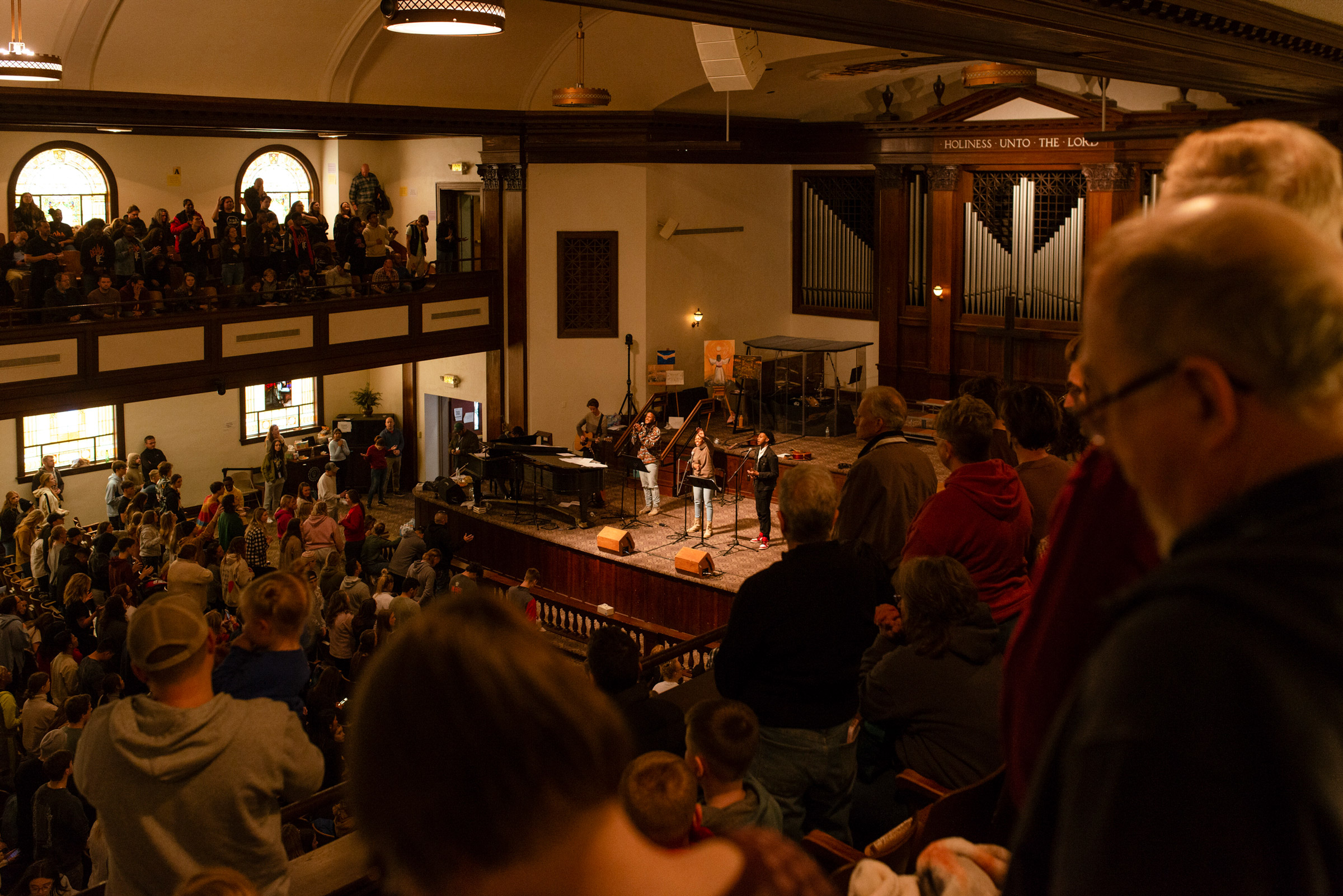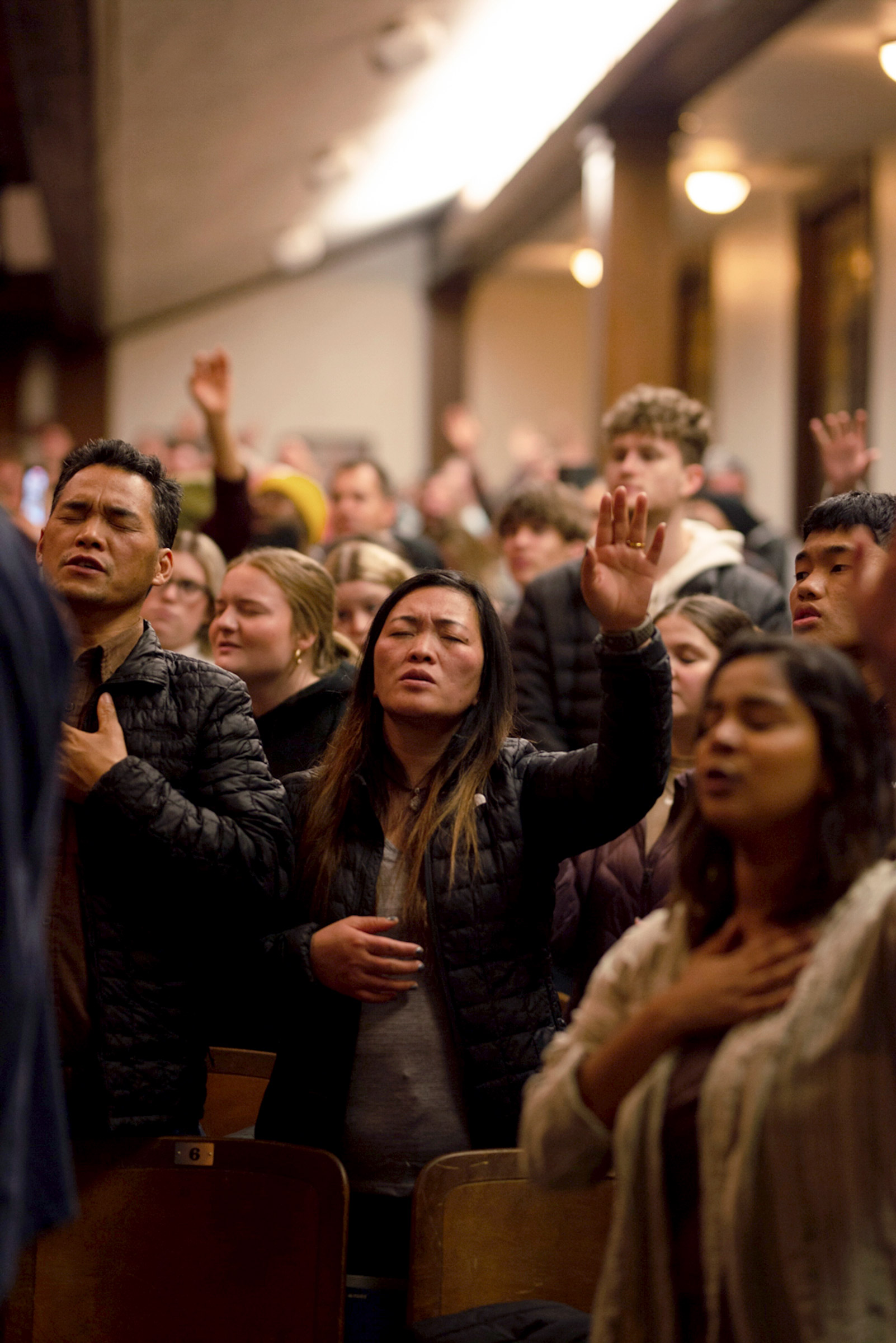
Something happened at Asbury University. Many Christians called the weeks-long worship service at the small Wilmore, Ky. school, which attracted tens of thousands and disrupted campus life, a revival. Fervent worship and prayer that began during a Feb. 8, 2023 chapel service continued for hours afterward, then days, with word soon spreading globally through social media and national news coverage. Asbury administrators, noting that the school and town have been overwhelmed by the rush of outside visitors, officially ended the on-campus revival gatherings last week. But a number of other universities have reported their own enthusiastic campus awakenings, leading excited Christians to contend this is evidence of an unprecedented movement of God across the nation.
The revival has had its fair share of skeptics, however, many of whom argue this is but another instance of embarrassing evangelical behavior. Two general critical trends have emerged, each of which has roots in long traditions of revivalist reproval. The first worries that revivals like Asbury’s lack moral seriousness. One need only think here of stereotypical image of cash-grabbing prosperity preachers swindling their way through the revival circuit, or the exacting evangelicals visiting the restaurant after worship who don’t tip. Or, perhaps even worse, there is the fear that such revivals are a cover or propellant for problematic politics, akin to the collective effervescence of a Trump rally. And to be sure, some MAGA-style public figures have hailed the happenings in Wilmore, seeing it as part of a larger political surge that bolsters the religious right.
Read More: Christian Nationalism’s Popularity Should Be a Wake Up Call
A second concern is that revivals like Asbury’s are simply sites of emotional manipulation, that participants are being swept up in charismata that is artificial, designed to induce chill bumps-on-arms responses. If a revival is simply the powerful surge of collective emotion, or the product of stagecraft, is it really real?
Indeed, some revivalists from past generations grew quite comfortable with exploiting material means. The 19th century preacher Charles Finney penned a manual that spelled out how to lead an effective revival. He did not see this strategy as insincere, but frustrated critics cried manipulation. Similarly, any evangelical church musician knows if you hit the right chord at just the right moment, you are guaranteed more hands in the air. A student at the Christian college where I teach recently shared this concern with me when she spoke of her home church’s routine revivalist stratagems, from the swells in worship music to church lighting design. The Asbury revival appears decidedly low budget, without the fancy lights and rock show aesthetics of other charismatic events. But my student’s concern is very real: given American evangelicalism’s oversaturation of synthetic spirituality, can we ever really be sure we’re experiencing God?
Christians from generations past have wrestled with both of these problems. What is real awakening, and what is artificial? Does revival require moral or political impact, and if so, what should it look like? The consensus interpretive key that most have landed on to address both concerns is to watch for the fruit of revival. A true revival produces results: demonstrably changed lives oriented towards holiness and justice.
Perhaps no American speaks of the hazards here as incisively as Frederick Douglass. In his 1845 Narrative, the then-enslaved Douglass discusses his enslaver, who had just experienced conversion at a Methodist revival. Douglass reports his hope that the revival might make his enslaver kinder, or even lead him to consider emancipation. But it did the opposite, making him “more cruel and hateful in all his ways.”

We should attend to Douglass’ warning: Even when we note the need for transformation, a revival can still conceal or enable oppression. But for Douglass, the answer wasn’t to reject revival or Christianity outright. The answer was to point toward the “Christianity of Christ,” a religion characterized by love of neighbor and concern for the oppressed.
Still, even keeping Douglass’ admonition in mind, it’s hard to know what to do. It’s hard because, by definition, a revival transcends our human understanding and comprehension. Insofar as it might have direct political or moral import, to expect a revival to have a logical behavioral outcome is to reduce its power. Procedure easily eclipses Pentecost.
Therefore, we might hope the Asbury revival results in dramatic social consequences, but we should be open to it resulting in changed lives that are surprising to us, that don’t operate in accordance with given political preferences. For Douglass, true Christian revival logically entailed abolition, a movement that many of his day deemed strange and dangerous. We might wonder what needed threats to the contemporary status quo could emerge from Asbury, and be open to how they might challenge our expectations.
Or perhaps we won’t even know. Perhaps there will be no revolution in the streets, because those who attend the revival simply needed to feel God’s love in their own hearts. I certainly pray for that feeling on my own campus: American young adults are overwhelmed and overstressed, burdened by a violent nation, economic precarity, destructive social media trends, mental health challenges, and general uncertainty about the future. When I asked Asbury professor David Swartz about the campus happenings, he told me that “Before it became a public revival, this experience felt like a long exhale taken by my anxious students reeling from the pressures of COVID-19 and social media—and then an infilling of a holy calm.” Maybe then the revival isn’t really about our own understanding as outsiders, our need to know if and how God is at work. Instead, it’s about what the students at Asbury or other college campuses need right here and now, and how God is meeting them where they are.
We might then carefully embrace the possibility of spiritual awakening even if we aren’t exactly sure from whence it came or where it’s going. Of course, beautiful music and gathered community affect us; there’s a reason why even the most avid secularist is moved at the sight of natural beauty, why we appreciate the well-honed rhetoric of a speaker we also happen to agree with, or why it’s possible to feel moved (as I have been, I admit) amongst a bunch of grooving hippies at a Phish concert. Christians have always been comfortable with the notion that God is present and active amidst the mundane and the material (think the bread and wine of the Eucharist), even if the how remains a mystery.
The famed Harvard religion scholar Harvey Cox once wrote of a dinner gathering with similarly positioned educated elites: “I asked my table companions if any of them had themselves ever ‘spoken in tongues’ or ‘prayed in the Spirit’ as the Pentecostals say.”
He continued, “There was an awkward silence. The priest glanced at his watch. The historian brushed crumbs from the tablecloth. The rest looked doubtfully at each other. None, it seemed, ever had. Nor had I, I admitted. They seemed relieved. But then I asked whether anyone had ever wanted to. Here again, the response was negative, and most seemed surprised when I revealed that I at times had wanted to.”
This captures something that I think is true about revivals, even at their most puzzling. At the end of the day, they may be flawed; they may sometimes be infiltrated by bad actors or produce meagre moral results; they may be emotionally manipulative. In that, they are human, and in that, they resemble all of us. But when one sees a person who is overcome with the Spirit, who knows that God loves them and is working to transform their life for the good, the final word does not have to be interrogation or critique. Instead, it can be an opportunity for admiration—or even aspiration.
More Must-Reads From TIME
- The 100 Most Influential People of 2024
- Coco Gauff Is Playing for Herself Now
- Scenes From Pro-Palestinian Encampments Across U.S. Universities
- 6 Compliments That Land Every Time
- If You're Dating Right Now , You're Brave: Column
- The AI That Could Heal a Divided Internet
- Fallout Is a Brilliant Model for the Future of Video Game Adaptations
- Want Weekly Recs on What to Watch, Read, and More? Sign Up for Worth Your Time
Contact us at letters@time.com